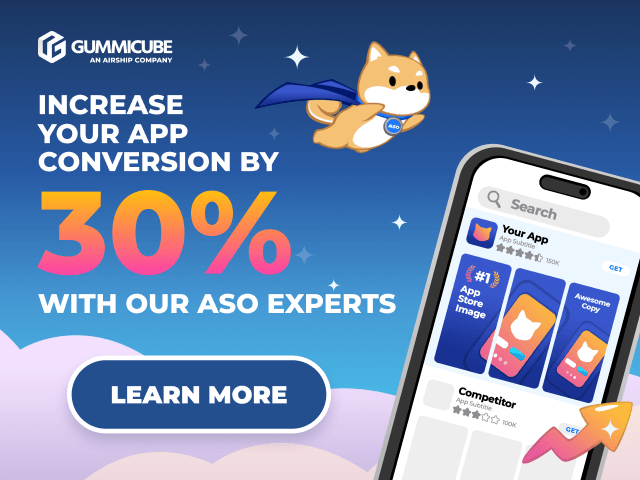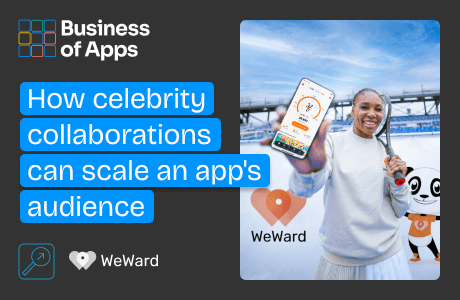Privacy has been on the forefront of every mobile marketer’s mind ever since Apple announced it is doing away with the unique identifier for advertisers (IDFA) under the new App Tracking Transparency (ATT) framework. Indeed, Apple’s Limit Ad Tracking (LAT) feature has been a hit with the majority iOS users, with 8 in 10 opting out of their in-app activity being tracked and passed on to third parties.
That said, it seems the much-dreaded move has not fazed savvy marketers, who have been able to capture value from mobile advertising campaigns through different methods. But as the industry waves goodbye to the IDFA, we must also take stock of what’s been impacted, such as personalized targeting and intricate user-level attribution. Indeed, one industry term that industry pundits predicted early-on would go the way of the dodo was LTV, or lifetime value.
LTV models then and now
Lifetime value modeling is a key method used in mobile performance marketing. It helps marketers determine how a user might spend in an app in the future based on installs, which is a key insight for budget allocation and for ensuring campaign effectiveness. But not only are LTV models notoriously complex to build, now that Apple has introduced new processes for ad tracking and user attribution, LTV modeling has gotten just that bit more complicated.
In Apple’s new ecosystem, the SKAdNetwork is the primary attribution solution for users who opt out of ad tracking on their iOS 14.5+ devices. It allows ad networks and advertisers to measure performance metrics such as impressions, clicks and app installs, but only at a campaign level. Crucially, it also limits the period of time during which users’ behavior can be tracked post-install. This time component in turn limits marketers’ ability to determine the LTV of their campaigns – particularly with respect to the previous cohort LTV they used pre-ATT.
The first victim of Limit Ad Tracking
Cohort LTV modeling has historically been the simplest way for marketers to predict the long-term returns of installs, since it requires little more than a spreadsheet. This model groups together installs from users who share similar campaign attributes – such as geography, ad network and publisher – as well as their in-app behavior and downstream revenue to calculate long-term returns.
However, the abolition of the IDFA has meant key data points underpinning cohort LTV modeling are now also gone. The SKAdNetwork simply does not allow marketers to connect user-level campaign and ad network data with in-app revenue and engagement reporting. Without the ability to understand which campaigns or ad networks drove app installs, these types of models yield little to no value to mobile marketers today.
However, not all is lost. A small window into performance metrics is still better than none, right? Enter the “D0 ROAS” model, rooted exactly in this logic. D0 stands for ‘Day Zero’, meaning that this model aims to calculate Return on Ad Spend (ROAS) based on the immediate snapshot of data available on the SKAdNetwork. This method is clearly error-prone, since it does not take into account how install cohorts mature and how that impacts performance. There has to be another solution.
So, is there any way to breathe new life into LTV today?
In a word, yes! Despite the hiccups encountered in measuring the effectiveness of ad campaigns in the wake of ATT, the industry has been adapting to users’ privacy choices and consolidating around new solutions that use the latest analytics capabilities to produce accurate results. The source of this new approach is, in fact, user-level data.
This may sound counter-intuitive at first, but let’s consider the data available to marketers after a user opts out of ad tracking. There are four in total:
- Attribution data from the SKAdNetwork and mobile measurement partners
- Identifier for Vendors (IDFV) that can be analyzed against user behavior
- Revenue data tracked against IDFV
- In-app engagements, also tracked against IDFV
An LTV model fit for today’s app ecosystem takes these early user-level data signals into account and combines them with revenue attribution – a model that predicts ROAS by attributing predicted revenue to SKAdNetwork campaigns. In other words, it provides a probability distribution of all the campaigns that are likely to have generated an install. It is important to note that it does not attempt to make one-to-one attribution matches like ‘fingerprinting’ does (read more on that here).
Machine learning to the rescue
To add to this, in recent years, machine learning (ML) algorithms have evolved exponentially and have become more accessible to mobile app brands’ data teams than ever. One of the key areas this has benefited is user acquisition. By leveraging ML in LTV modeling, marketers can see how revenue is distributed within a campaign and decide on the appropriate steps to take for small cohorts. They are also able to understand the long-term performance of their campaigns and update information on maturing cohorts as they learn more about underlying user behaviors.
Finally, those who integrate LTV models with customer relationship management tools will see additional benefits, since information user-level predictions alongside churn and conversation probabilities can be used to power marketing efforts to the right audience – be that via email or push-notifications.
The verdict
Accurately predicting the long-term returns of installs is mission-critical for mobile marketers – and lucky for them, lifetime value modeling is far from dead. While it is true that popular app stores’ quest for consent-driven app experiences have rendered some LTV models useless, marketers are not left to guesswork when it comes to user acquisition.
By taking advantage of new methods and technologies such as revenue attribution and machine learning, they can continue to glean vital insight on campaign performance – all without infringing on users’ privacy choices or violating regulations. Until the next curveball is thrown at the app advertising industry, a user-level LTV model is the best option for long-term SKAdNetwork campaign performance measurement.
To learn more about app user acquisition in the post-IDFA era, and what the future holds of mobile marketing performance measurement, visit Vungle.com











